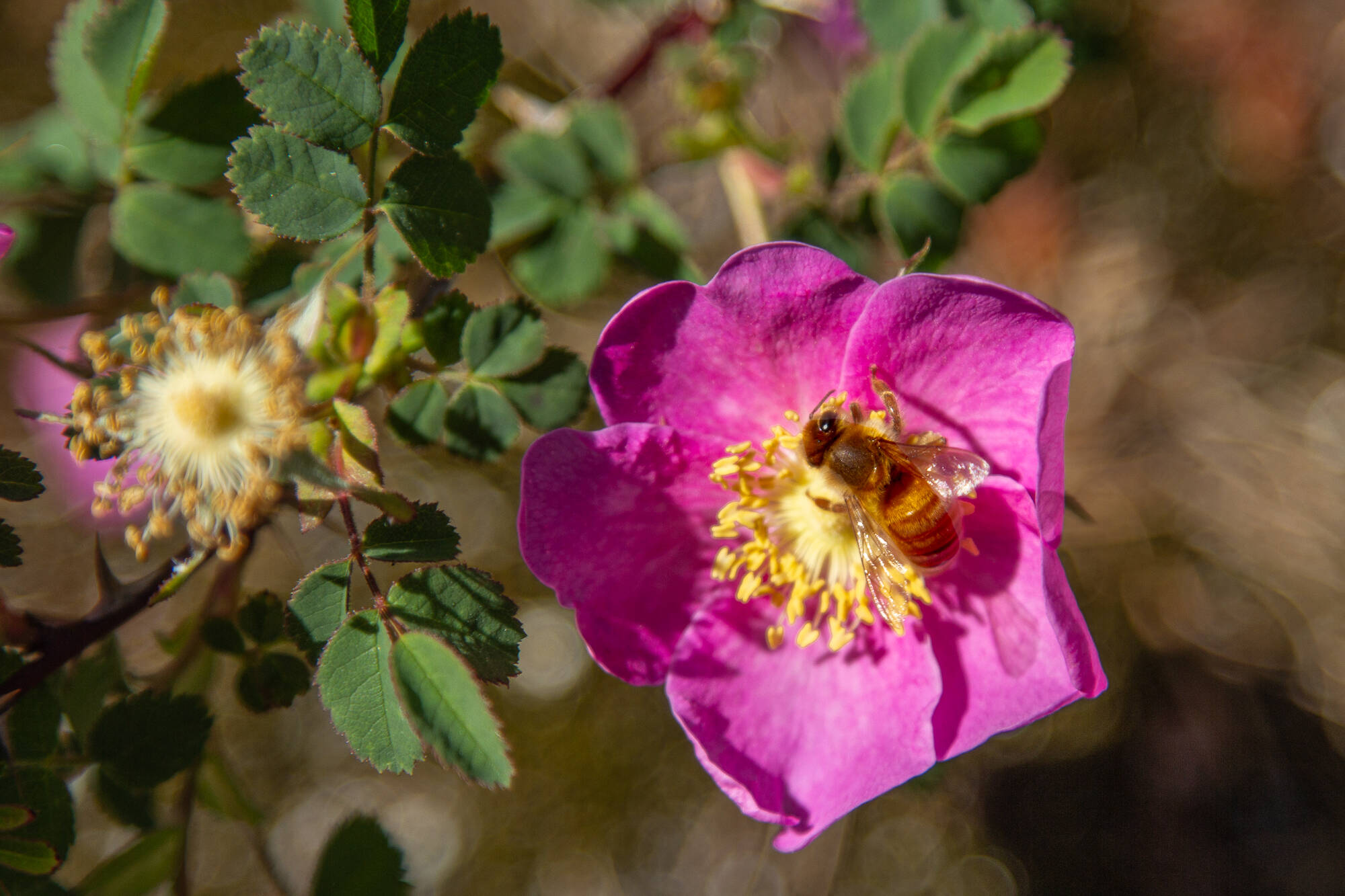An abundance of Whidbey wildflowers that are easily viewed from many major roads have thrived due to a more temperate June than usual.
Though summer has just begun, experts recommend you take a peek before they’re all gone.
Over at the Pacific Rim Institute in Coupeville, the public can access two and a half miles of trails while taking in the view of white yarrow, purple aster, pink honeysuckle and golden paintbrush, the latter of which was recently removed from the state’s endangered species list. The organization is dedicated to growing several species of rare native plants.
Pacific Rim Institute staff advises anthophiles to watch for prairie goldenrod and pacific aster to bloom in the coming months.
Vibrant purple lupine at the side of Boon Road on North Whidbey is a pretty sight to see, but many people likely aren’t aware that the flower is toxic if ingested.
Luckily, livestock and farm animals aren’t fond of the plant, so there haven’t been any issues on Whidbey, according to Loren Imes, the coordinator for Washington State University Extension.
“Most animals don’t browse on toxic plants in general,” he said. “It only becomes a problem when their preferred food is not available to them.”
It might also become a problem if the seeds get accidentally mixed in with hay.
Oddly, Imes said he has heard of deer and elk consuming the flowers without a problem.
Later in the season the seeds of lupine become fairly toxic. Younger plants are also more toxic than older plants. Contact with the leaves and stems does not usually cause skin irritation, so lupine should be safe to touch if you’re picking it for a wildflower bouquet.
“There are lots of common garden plants that most people don’t realize can be toxic,” Imes said, referring to daffodils, daisies, irises, rhododendrons and the leaves of rhubarb plants.
As a rule of thumb, he doesn’t recommend eating plants that aren’t cultivated for that purpose.



